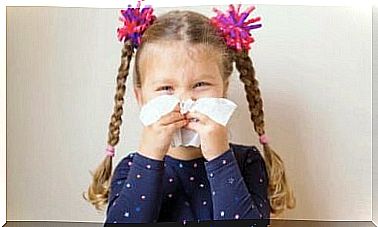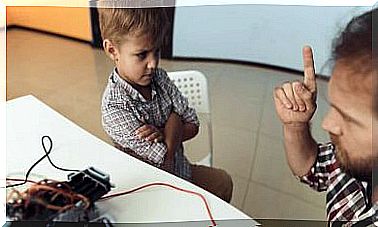Digestive Disorders In Children

No matter how much we wish our kids were healthy all the time, it’s a little difficult. There are many digestive disorders in children, and in the vast majority of cases the symptomatology is more or less the same.
Therefore, the diagnosis can be difficult in some cases, so going to a specialist early is the best way to avoid an unpleasant situation in the future. For this reason, we explain here some of the most common conditions we may encounter in the emergency room. Read on!
Are Digestive Disorders Common In Children?
In both adults and children, digestive disorders are quite common. Think of the number of organs we are talking about: mouth, pharynx, esophagus, stomach, small intestine, colon, rectum, anus… And that does not involve the associated glands! This includes, for example, the liver and pancreas.
It is therefore logical to believe that any change in these organs is a digestive disorder. The physician responsible for diagnosing and treating these diseases is a gastroenterologist, and in cases where surgical solution is required, general surgeons are the ones trained to perform it.

All of these conditions have various symptoms including abdominal pain, fever, nausea, vomiting, diarrhea and yellowing of the skin (jaundice).
Some of the digestive disorders in children
Most of the conditions we will mention below correspond to medical diseases, while only one – appendicitis – has a surgical solution. Read on to find out more!
Gastroenteritis, one of the most common digestive disorders
As the name suggests, this disease corresponds to inflammation of the stomach and part of the small intestine. It usually occurs due to viral infections or food poisoning, and from a clinical point of view, abdominal pain, diarrhea and vomiting may occur.
Fortunately, it is usually a self-limiting condition. This means that it tends to go away spontaneously on its own within a few days. However, treatment is still necessary: it is important to ensure constant hydration and nutrients to avoid complications.
2. Appendicitis
Appendicitis is one of the most common diseases on this list! It is the surgical disease of the digestive system par excellence. It is the progressive inflammation of the appendix. It is located in the last part of the small intestine very close to the beginning of the large intestine.
The symptoms that children with appendicitis can have – as well as adults – are abdominal pain in the lower right abdomen, fever, nausea, vomiting and loss of appetite.
The solution is a quick surgical procedure. The longer it takes to remove the appendix, the greater the likelihood of complications such as tissue perforation and the onset of peritonitis.
Celiac disease
Celiac disease is a chronic autoimmune condition characterized by intolerance to gluten. This protein is found in widely used foods such as wheat, barley and rye, and even in small amounts it can cause severe inflammatory reactions on the digestive tract.
Over time, especially in childhood, when there is no accurate diagnosis, the deterioration of the most superficial intestinal layer can lead to the onset of malnutrition.
This causes non-specific gastrointestinal disorders such as pain and diarrhea, but more importantly, adequate nutrient uptake is inhibited. In children, this greatly hinders growth.
4. Lactose intolerance
According to a publication from the Spanish Foundation of Digestive System (FEAD), this condition has an estimated incidence of 20-40% in this country, making it quite an important disorder. It occurs due to a low production of enzymes for lactose treatment.
This nutrient is a carbohydrate found abundantly in foods such as dairy products, including milk. When not treated properly, it can cause several symptoms such as abdominal pain and bloating in addition to diarrhea.

Can these digestive disorders in children be treated?
Yes, fortunately, the disorders we have mentioned above have a treatment. Some are only to prevent the development of complications, such as hydration in cases of viral gastroenteritis. Others are completely curative, as in the case of appendicitis.
In case of specific intolerances, such as celiac disease and lactose intolerance, the only solution is to make progressive dietary changes to eliminate potentially harmful foods. Unfortunately, there are still no curative treatments for these conditions.
A very diverse group of digestive disorders in children!
We have presented you with a small selection, but there are many, many more. Intestinal obstruction, pancreatitis and Hirschsprung’s disease are just some of them.
In some cases, they can be diagnosed with routine visits to the pediatrician. However, it is advisable to go to the doctor as soon as possible if any of the above symptoms are present. Finally, in special cases you should consult a pediatric gastroenterologist or a pediatric surgeon.








